Ein kristallklarer Teich ist Kunst und Mikrobiologie zugleich. An einem sonnigen Nachmittag glänzt das Wasser wie Glas, nach einem langen Wochenende ähnelt es vielleicht eher einem Matcha Latte. Übeltäter sind eine unsichtbare Armee einzelliger Algen, die sich alle paar Stunden teilen, und eine Vielzahl opportunistischer Bakterien, die das Wasser trüben und die Kiemen der Fische reizen. Mechanische Schwämme fangen einen Teil davon auf, und nützliche Bakterien in Biofiltermaterialien erledigen den Rest – doch nichts vernichtet frei schwebende Organismen so schnell und gründlich wie ultraviolettes Licht. Im Folgenden erklären wir Ihnen, wie UV-Licht Algen und Krankheitserreger abtötet, wie Sie den richtigen UV-Teichfilter auswählen, wo Sie einen UV-Klärer optimal platzieren und wie die solarbetriebene Filteranlage von Poposoap die Wartung nahezu mühelos macht.
Was ultraviolettes Licht mit Algen und Krankheitserregern macht
Licht ist Energie, und UV-C-Strahlung (Wellenlängen um 254 nm) besitzt genügend Energie, um Molekülbindungen in lebenden Zellen aufzubrechen. Wenn Teichwasser durch eine Quarzhülse fließt, die eine UV-C-Lampe umgibt:
- Algen – DNA-Quervernetzungen, Zellteilung stoppt, die Kolonie verklumpt und stirbt ab. Die entstehenden Flocken sind groß genug, um vom nächsten Filtervlies aufgefangen zu werden, wodurch Erbsenwasser innerhalb von 24–48 Stunden klar wird.
- Bakterien – Zellmembranen platzen; krankheitserregende Arten wie Aeromonas und Pseudomonas erreichen die Fische nie.
- Parasitenlarven (z. B. Ich-Tomiten) erleiden das gleiche Schicksal, wodurch ihr Lebenszyklus unterbrochen wird, bevor sie sich an den Kiemen anheften können.
Im Gegensatz zu chemischen Algiziden hinterlässt UV-Licht keine Rückstände, verändert den pH-Wert nicht und ist unschädlich für Kois, Goldfische, Schnecken und Pflanzen. Es benötigt lediglich eine konstante Durchflussrate, damit die Photonen ausreichend Zeit haben, ihre Wirkung zu entfalten.
Welche UV-Anlage passt zu Ihrem Teich?

Der Markt unterteilt UV-Geräte in drei Klassen:
- UV-Klärer – 5–15-Watt-Lampen, die hauptsächlich zur Algenbekämpfung in Zierteichen und Naturteichen bis zu einem Volumen von ca. 7.500 Litern entwickelt wurden. Sie reduzieren die Algenbildung im Wasser, sind aber nicht zur Sterilisation von Krankheitserregern geeignet.
- UV-Sterilisatoren – 18–55 W (oder höher) mit polierten Edelstahlkammern, entwickelt zur Algen- und Krankheitsbekämpfung. Eine optimale UV-Sterilisator-Anlage für Teiche erfordert eine Verweilzeit, die eine Bestrahlungsstärke von 30.000–90.000 µW·s/cm² erreicht – ausreichend, um 99,9 % der meisten Bakterien abzutöten.
- Integrierte UV-Filterboxen – Komplettgeräte, die Schaumstoff, Biofiltermedien und eine UV-C-Lampe unter einem Deckel vereinen. Der Solar-Teichfilter mit UV-Klärer von Poposoap gehört in diese Kategorie und bietet bis zu 660 Gallonen pro Stunde (GPH) mechanische, biologische und UV-Wasseraufbereitung, ohne dass ein Netzanschluss erforderlich ist.
Faustregel zur Größenbestimmung:
Grünwasserbehandlung — ~10 W pro 1.000 Gallonen.
Sterilisationsgrad — ~30–40 W pro 1.000 Gallonen (bei Nenndurchfluss).
Da die Pumpen von Poposoap einen gleichmäßigen Durchfluss gewährleisten, können Sie die Lampenleistung präzise anpassen, anstatt vorsichtshalber zu groß zu dimensionieren.
Bester Installationsort für einen Teich-UV-Klärer
Das Wasser sollte nach dem Entfernen grober Verunreinigungen, aber bevor es feine Biofilter erreicht, mit UV-Licht in Berührung kommen – andernfalls können schwimmende Algenmatten die Lampe abschatten. Die bewährte Verrohrung sieht folgendermaßen aus:
Abschäumer → Mechanische Filtermatten → UV-Kammer → Biofiltermaterial → Wasserfall, Fontäne oder Rücklaufauslass
Poposoap macht die Installation kinderleicht: Verbinden Sie den flexiblen Auslass eines Poposoap-Teichskimmers mit dem Einlass einer Poposoap-UV-Filterbox und leiten Sie das geklärte Wasser anschließend zu einem Poposoap -Wasserfall-Set oder einem Schwimmbrunnen . Solarpaneele sorgen für den reibungslosen Betrieb des gesamten Systems, ohne dass Verlängerungskabel durch den Garten verlaufen.
Montagehinweise
- Platzieren Sie die UV-Einheit außerhalb des Teichs auf einer ebenen Fläche oder in einem Pumpenraum; tauchen Sie das Ballastgewicht niemals unter.
- Halten Sie die Quarzhülse waagerecht, um zu vermeiden, dass sich Luftblasen um die Lampe herum ansammeln.
- Um Turbulenzen zu minimieren und die angegebene Belichtungszeit zu gewährleisten, sollten Sie beim Ein- und Ausfahren in die UV-Anlage jeweils 30 cm geraden Schlauch verwenden.
- In Winterzonen sollte die Kammer umgangen oder entleert werden, sobald die Wassertemperatur unter 40 °F (4 °C) sinkt, um Risse in der Hülse durch Eisausdehnung zu vermeiden.
Wartungsverfahren zur Aufrechterhaltung einer hohen UV-Leistung
Die UV-C-Intensität nimmt mit der Zeit ab – selbst wenn die Röhre für das bloße Auge noch violett leuchtet. Beachten Sie folgenden Rhythmus:
- Monatlich – Wischen Sie die Quarzhülse mit einem weichen Tuch ab; ein hauchdünner Mineralfilm reduziert die UV-Strahlung um 30 %. Dank der Schnellverschlüsse von Poposoap lässt sich die Hülse werkzeuglos entfernen.
- Vierteljährlich – Spülen Sie die Vorfilterschäume ab, damit sich kein Schlamm auf den Hülsenoberflächen absetzt.
- Jährlich – Lampe austauschen. Nach 8.000–9.000 Betriebsstunden (etwa eine Vegetationsperiode bei Dauerbetrieb) sinkt die Lichtleistung unter die für Algizide notwendige Stärke. Poposoap-Ersatzlampen lassen sich in weniger als einer Minute in die Original-Bajonettfassung einsetzen.
- Batterieprüfung – Wenn Sie einen Poposoap Solar-Teichfilter mit Batterie-Backup betreiben, sollten Sie die Batterie einmal im Monat vollständig aufladen und dann bei Sonnenuntergang auf 30 % entladen lassen, bevor Sie sie erneut aufladen. Dadurch werden die Zellen optimal konditioniert und ihre Lebensdauer maximiert.
Ersatzhülsen und O-Ringe sind preiswert und sorgen dafür, dass Ihr Teich während der Wartezeit auf die Lieferung nie ungeschützt bleibt.
Wie Poposoap eine intelligentere Filtrationskette aufbaut

Die Poposoap-Filtrationssysteme wurden so konstruiert, dass jede Stufe die nächste effektiver macht:
- Solarpumpe – hocheffizientes monokristallines Panel und bürstenloser Motor sorgen für einen stabilen, pulsationsfreien Durchfluss – der entscheidende Faktor bei der Dimensionierung der UV-Anlage.
- Mechanische Kammer – Schaumstoffe mit gestaffelter Dichte fangen Blätter und groben Abfall auf, sodass das in die Lampe eintretende Wasser optisch klar ist.
- UV-Klärer – versiegelte Niederdruck-Quecksilberlampe in einem hochdurchlässigen Quarzrohr; Vorschaltgerät bezieht seine Spannung direkt von den 12 V Gleichstrom der Pumpe, keine Wechselrichterverluste.
- Bio-Ring Tray – poröses Keramikmedium schließt die Nitrifikation ab, nachdem UV-Licht vor opportunistischen Bakterien geschützt hat.
- Belüftungsauslass – Das Wasser tritt über einen Überlauf oder eine Fontänendüse aus, wodurch CO₂ entfernt und der für die Bakterien notwendige Sauerstoffgehalt erhöht wird.
Da alle Teile mit Widerhakenverbindern und Silikondichtungen zusammengesteckt werden, lässt sich das gesamte System für die Winterlagerung in weniger als fünfzehn Minuten demontieren.
Fazit: Klares Wasser ist eine Wissenschaft, kein Geheimnis.
Ein Teich voller Leben muss nicht mit trübem Wasser im Frühling oder sommerlicher Hitze zu kämpfen haben. UV-Filterung bietet eine chemikalienfreie und fischschonende Methode, Algen und Krankheitserreger zu bekämpfen, bevor sie sich ausbreiten können – vorausgesetzt, die Lampe ist richtig dimensioniert, am richtigen Ort platziert und die Schutzhülle sauber gehalten. Die solarbetriebenen UV-Teichfilter von Poposoap vereinen diese Vorteile in einem eleganten Design: zuverlässiger Durchfluss, werkzeuglose Wartung, netzunabhängiger Betrieb und die Gewissheit klinisch reinen Wassers. Einmal installieren, die Lampe saisonal austauschen und einen Teich genießen, der in der Abenddämmerung genauso frisch aussieht wie im Morgengrauen.




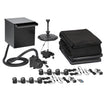
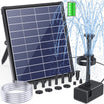
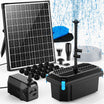
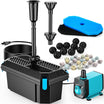
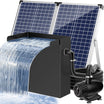
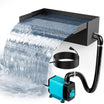

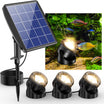
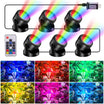

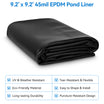
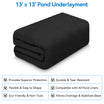

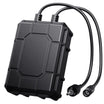
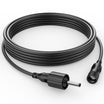

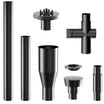
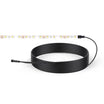
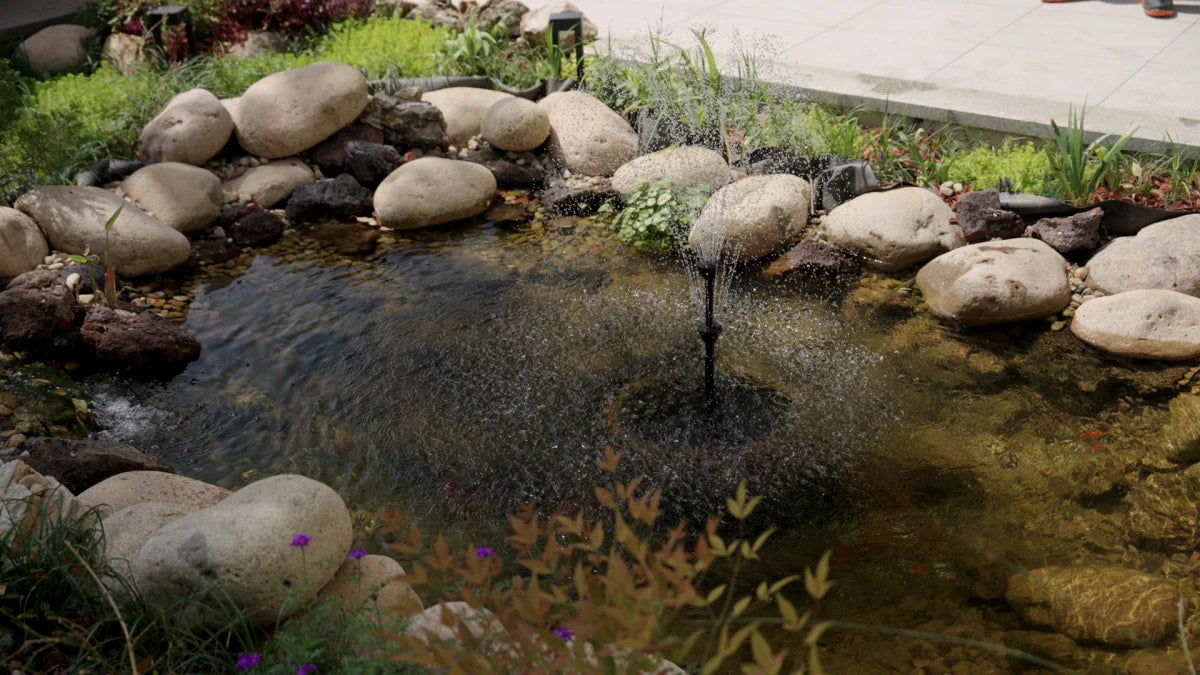
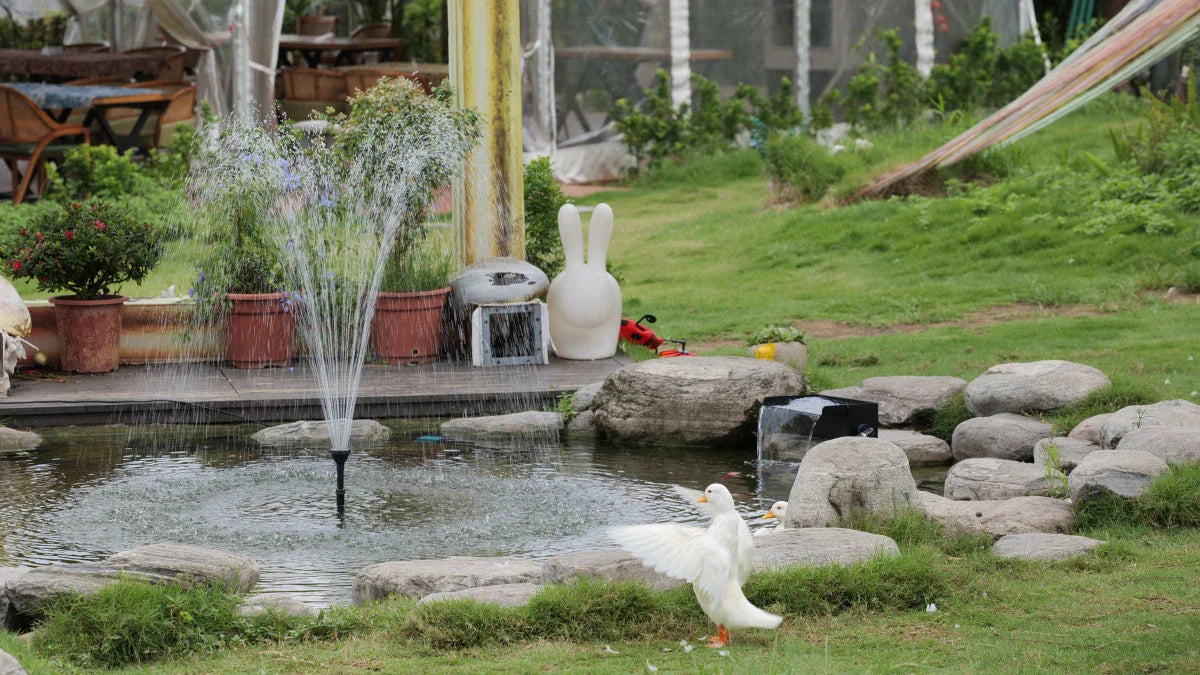

Hinterlasse einen Kommentar
Alle Kommentare werden vor der Veröffentlichung geprüft.
Diese Website ist durch hCaptcha geschützt und es gelten die allgemeinen Geschäftsbedingungen und Datenschutzbestimmungen von hCaptcha.